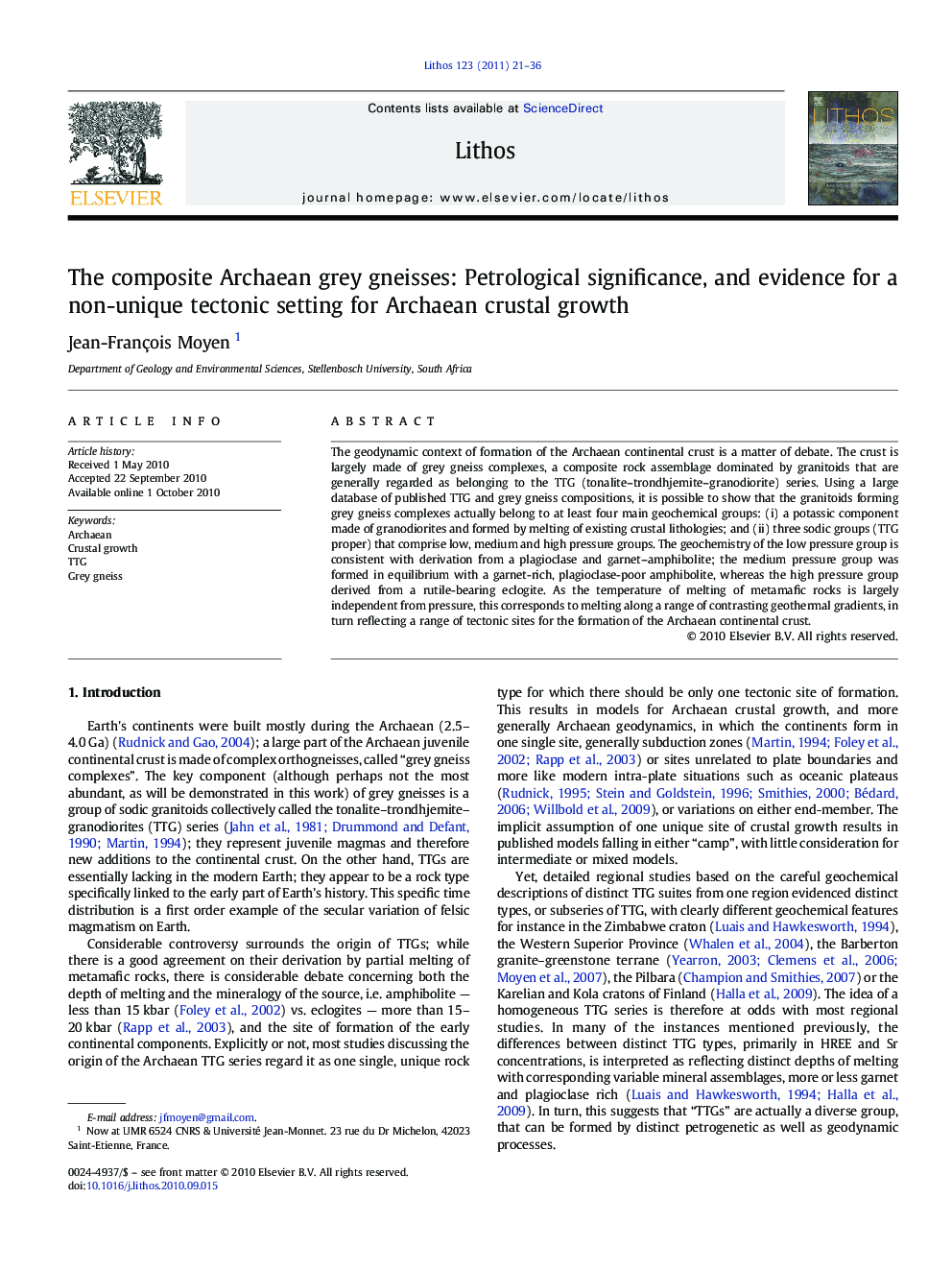| کد مقاله | کد نشریه | سال انتشار | مقاله انگلیسی | نسخه تمام متن |
|---|---|---|---|---|
| 4716784 | 1638722 | 2011 | 16 صفحه PDF | دانلود رایگان |

The geodynamic context of formation of the Archaean continental crust is a matter of debate. The crust is largely made of grey gneiss complexes, a composite rock assemblage dominated by granitoids that are generally regarded as belonging to the TTG (tonalite–trondhjemite–granodiorite) series. Using a large database of published TTG and grey gneiss compositions, it is possible to show that the granitoids forming grey gneiss complexes actually belong to at least four main geochemical groups: (i) a potassic component made of granodiorites and formed by melting of existing crustal lithologies; and (ii) three sodic groups (TTG proper) that comprise low, medium and high pressure groups. The geochemistry of the low pressure group is consistent with derivation from a plagioclase and garnet–amphibolite; the medium pressure group was formed in equilibrium with a garnet-rich, plagioclase-poor amphibolite, whereas the high pressure group derived from a rutile-bearing eclogite. As the temperature of melting of metamafic rocks is largely independent from pressure, this corresponds to melting along a range of contrasting geothermal gradients, in turn reflecting a range of tectonic sites for the formation of the Archaean continental crust.
Research Highlights
► Archaean Grey Gneiss complexes are composite units made of many distinct lithologies.
► Only a portion of grey gneisses is actually TTG.
► TTGs can be subdivided in three groups reflecting different pressures of melting.
► TTGs form along a range of geothermal gradients in contrasting tectonic settings.
Journal: Lithos - Volume 123, Issues 1–4, April 2011, Pages 21–36